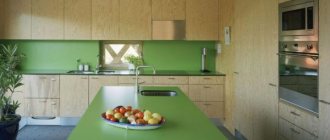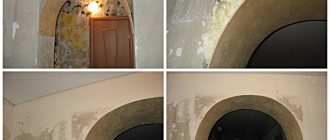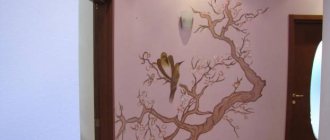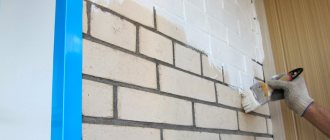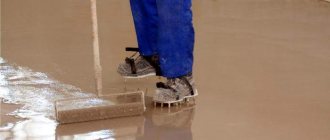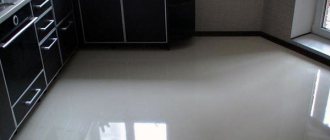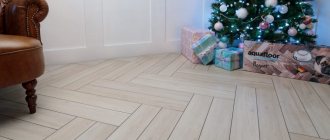Is it possible to paint on the wall with acrylic paints?
Painting walls with acrylic paints
– a modern and original solution to the problem of a boring interior.
This option is great for decorating a children's room or bedroom, and the living room will be decorated with a painting painted directly on the wall
.
Interesting materials:
How to fold laundry beautifully in a closet? How to beautifully tie a ribbon on a curtain? How to beautifully close gas pipes in the kitchen? How are the slats attached to the bed? How are Roman blinds attached to the ceiling? How to fix an anchor bolt in a loose wall? How to attach a garland to a window? How to attach a garland to wallpaper? How to attach a curtain garland to a curtain rod? How to attach a cornice with a suspended ceiling?
Why acrylic?
Many paints are suitable for facade and interior work. An advantageous medium is acrylic. Specific properties allow it to be used in an apartment.
The main features of the composition are:
- no pungent odor;
- absence of harmful, toxic components that cause allergies in humans.
The dye is water-based and is a clean, environmentally friendly product, without chemical solvents.
Acrylic paints are environmentally friendly and safe for humans.
Acrylic has the following properties:
- Moisture resistance.
- Frost resistance.
- Wear resistance.
- Elasticity.
- Durability.
- Fire safety.
The service life of acrylic materials is 15-20 years. The product can instantly set on wooden, metal, concrete surfaces and dry quickly. Thanks to the varnish component, as well as special additives, upon hardening, a durable, elastic paint layer is formed, protecting the base from external influences and temperature changes.
For decorative painting, any color can be selected. Thick paint is well diluted with water. When applied with an artistic brush or roller, the fresh material does not spread, lies flat, and does not crack when drying.
Despite its high cost, acrylic paint is used sparingly. For artistic painting of wall coverings, 1 large can of white and 3-4 small cans of different shades are enough to get a wide range of colors.
Help for a beginner: stencils and blanks
It is easier to use prepared stencils with patterns and designs. All you need is paint, a template, tape and time. Even a person without artistic talent can cope with the task.
Apply the base color evenly, creating a working surface. Circle the side parts with masking tape. Fix the stencil in the four corners or stick it on the wall if it is self-adhesive. If the surface of the work is large, use a roller with thick but short fur; if there are individual elements, use a brush.
After applying the design, wait for the paint to dry and remove first the tape and then the stencil. It is important to wait until it dries completely, otherwise the paint will run or streak around the edges.
For beginners, it is better to use self-adhesive stencils. This way the design can be applied easily, without smudges or streaks.
Masking tape
Photo: using masking tape to paint walls
At the initial stage, choose the background color. Painting tape is glued onto the treated wall so that geometric shapes are formed. The tape prevents paint from getting onto the painted background.
Photo: using masking tape
After painting the geometric shapes, the masking tape is removed. This way you can get smooth and clear stripes. The tape leaves no traces after removal.
Technological process
Before starting drawing, they choose an image, determine the size, purchase consumables (brushes, rollers, spatulas, napkins, etc.), stencils, if the work will be done according to a ready-made template, select shades.
Preparatory work
To get a neat, beautiful painting, you need to prepare a working surface. If the base is plastered, does not crumble and lies flat, no cleaning is required.
The wall to be painted with acrylic must be leveled and treated with a layer of primer.
Preparing the wall for painting:
- Remove wallpaper, old paint from the surface with a spatula, wash off whitewash and loose plaster. The painted layer is removed using a drill with an attachment in the form of a hard wire brush.
- The coating is washed or vacuumed to remove dust.
- Degrease the working base with white spirit or a special primer.
- Level with plasterboard and putty.
- The surface is rubbed with medium-grain sandpaper, and the dust formed during processing is removed.
- Apply acrylic primer with a roller or paint brush and dry. The soil will ensure reliable adhesion of the paint composition to the working base, penetrating 5-10 cm deep, and protects against mold and mildew.
The beginning of the beginning: choosing a picture
In a living space of standard sizes, painting becomes the compositional center of the interior, attracting maximum attention. It’s impossible to ignore the design, so its style should be in harmony with the surrounding environment.
• Classic painting : flowers, landscapes, reproductions, ornaments. The drawing is realistic, but at the same time reflects the desire for ideality. The color scheme is harmonious, without pronounced contrasts, and the subjects are traditional. If the interior is decorated in country or any historical style, from antique to empire, then classical painting will fit into it.
Classic painting never goes out of style
• Art Nouveau : female portraits, drawings of birds, complex floral patterns, where smooth wavy lines and natural colors predominate. Refined and exquisite painting.
Exquisite fresco in Art Nouveau style
• Oriental (Chinese, Japanese) painting is represented by landscapes, drawings of sakura, dragons, and cozy courtyards. These images are laconic and expressive due to high contrast: black, red, white, yellow, green, pink are present.
Japanese style painting
• Minimalism and primitivism . Painting uses a limited number of colors, shapes and lines. A drawing without details, contrasting and tending towards abstraction.
Minimalist painting in the nursery
• Modern style . Limitations are dictated only by the artist’s imagination. This includes graffiti, stencil painting, and various combined techniques. Images are stylized or simplified. Modern paintings are in harmony with the corresponding interior styles: high-tech, loft, eclectic, Scandinavian, eco, etc.
Graffiti is also a type of modern painting
In an effort to visually enlarge a room, many paint a picture with a perspective on the wall: for example, a large-scale landscape or a picturesque street with a road stretching into the distance. As a result, the opposite effect is achieved in a small room. She seems even smaller, and the wall more massive.
The fact is that in order to perceive an image as three-dimensional, with perspective, it is necessary to look at it from a sufficiently large distance. This is impossible in a small room, so the drawing is perceived as flat and disproportionately large. Perspective painting is recommended only for spacious rooms.
Simple painting in the nursery
When choosing a theme for painting, you should also consider its location. • In the bedroom , stick to soothing or neutral subjects: intimate natural landscapes, flora and fauna, low-contrast abstractions. The color scheme is soft, pastel.
Delicate painting in the bedroom
• For the living room, the choice of motif is much wider: images “with character” are welcome, creating an atmosphere for communication, for example, large-scale city or seascapes, reproductions of famous paintings, expressive abstractions.
Painting with 3D effect in the living room
• For painting in the kitchen, its functionality is important: choose moisture-resistant paints or cover the finished painting with several layers of varnish. The best choice would be still lifes or landscapes, images of cafes or picnic scenes.
Laconic painting in the bathroom
• In the bathroom , as in the kitchen, the painting needs additional protection, and moisture-resistant plaster is suitable as a base. A suitable theme is natural: the seabed with all its inhabitants, the coast, plant motifs.
Wall painting above the dining area
• The choice of pattern for a children's room is dictated by the personal preferences of its inhabitants. Fairy-tale landscapes, cartoon characters, starry skies, hobbies and hobbies... Flashy colors have a stimulating effect on the nervous system and quickly become boring, so it is better to prefer calm tones as dominant ones.
Cute painting in the nursery
3D images
This work is performed with construction gypsum mixtures and spatulas. The solution is applied to the pre-drawn sketch where the volume is required. The process is akin to the work of a sculptor, and therefore requires patience and care. After the volumetric composition has dried, it can be painted, but this is not at all necessary.
